Discover Incredible Places in Fatehpur Sikri
Explore our handpicked collection of breathtaking destinations across India
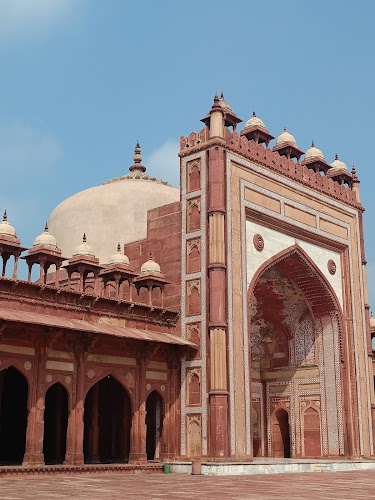
Buland Darwaza
The Buland Darwaza (Door of Victory), an imposing gateway, stands as a magnificent entrance to the Jama Masjid at Fatehpur Sikri. Built by Emperor Akbar to commemorate his victory over Gujarat, it is a stunning example of Mughal architecture. Its sheer size and intricate carvings are breathtaking. Visitors are awestruck by the grandeur of the structure, which is made of red sandstone and adorned with white marble inlay. Calligraphy and Persian inscriptions decorate the facade, adding to its artistic appeal. The Buland Darwaza provides a captivating glimpse into the rich history and architectural prowess of the Mughal era. Climbing the steps offers panoramic views of the surrounding landscape, making it a memorable experience.
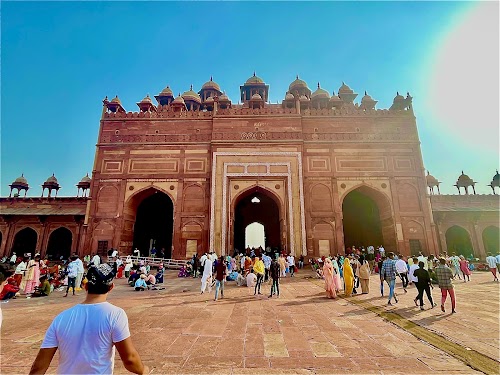
Jama Masjid
Jama Masjid in Fatehpur Sikri is a magnificent mosque, a testament to Mughal architectural grandeur. Its vast courtyard, intricate carvings, and towering gateways create a serene and awe-inspiring atmosphere. The mosque is not just a place of worship but also a historical landmark that showcases the artistic and religious influences of the Mughal era. Visitors can admire the Buland Darwaza, one of the largest gateways in the world, and explore the serene interior adorned with exquisite marble work and Persian inscriptions. The spiritual ambiance and architectural splendor make Jama Masjid a must-visit destination for anyone exploring Fatehpur Sikri. Don't miss the chance to experience the tranquility and historical significance of this iconic mosque.
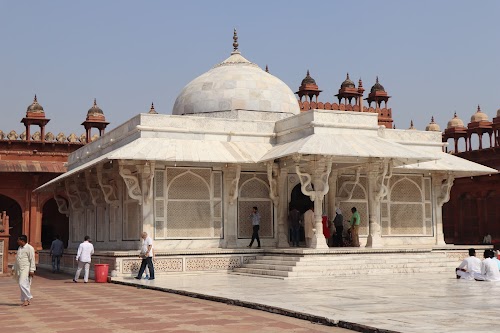
Dargah of Salim Chishti
The Tomb of Salim Chishti is a renowned white marble mausoleum located within the Jama Masjid courtyard in Fatehpur Sikri. It is a stunning example of Mughal architecture, known for its intricate marble carvings, delicate latticework screens (jali), and the serene atmosphere it exudes. Pilgrims of all faiths visit to seek blessings, tie threads for wish fulfillment, and admire the exquisite artistry. The tomb stands as a testament to the Sufi saint's spiritual influence and the Mughal emperor Akbar's devotion. The detailed craftsmanship and the peaceful ambiance make it a must-see destination for anyone visiting Fatehpur Sikri. Photography is permitted, allowing visitors to capture the beauty of this historical and spiritual site. Remember to dress respectfully when visiting.
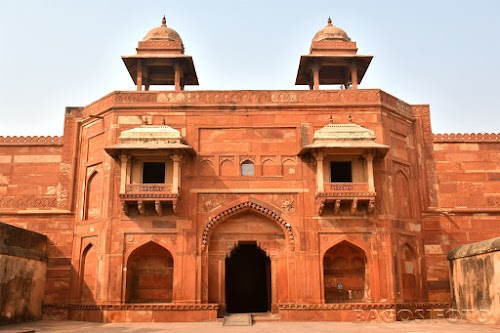
Jodha Bai's Palace
Jodha Bai's Palace, also known as Mariam-uz-Zamani's Palace, is the largest and arguably the most important building within the Fatehpur Sikri complex. This magnificent palace showcases a blend of Rajput and Mughal architectural styles, reflecting the religious tolerance and harmonious relationship between Emperor Akbar and his Rajput wife, Jodha Bai. The palace features intricate carvings, beautiful courtyards, and stunning jharokhas (overhanging enclosed balconies). Its unique design incorporates elements from both Hindu and Islamic traditions, making it a fascinating example of syncretic architecture. Visitors can explore the spacious rooms, imagine the royal life within its walls, and appreciate the artistic details that adorn every corner of this historical gem. The palace offers a glimpse into the life of a powerful queen and the cultural exchange that flourished during Akbar's reign.
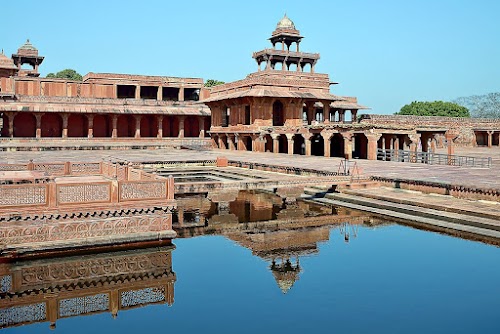
Fatehpur Sikri Fort
Fatehpur Sikri, a UNESCO World Heritage Site, is a magnificent fortified city showcasing Mughal architecture at its finest. Built by Emperor Akbar in the 16th century, it served as the capital for only 14 years before being abandoned due to water scarcity. Today, it stands as a remarkably well-preserved testament to the grandeur of the Mughal era. Explore its stunning palaces, courtyards, mosques, and intricately carved structures, all reflecting a blend of Persian and Indian architectural styles. Don't miss the Buland Darwaza, a colossal gateway, and the serene Jama Masjid. Fatehpur Sikri offers a captivating glimpse into the life and times of Emperor Akbar and the artistic achievements of his reign.

Keoladeo National Park - Rajasthan
Keoladeo National Park, also known as Bharatpur Bird Sanctuary, is a UNESCO World Heritage Site and a haven for birdwatchers. This man-made wetland is home to over 360 bird species, including migratory birds that flock here during the winter months. The park offers a unique ecosystem with diverse flora and fauna, making it an ideal destination for nature lovers and wildlife enthusiasts. Visitors can explore the park on foot, by bicycle, or by rickshaw, offering different perspectives of the landscape and its inhabitants. The serene atmosphere and abundant wildlife make Keoladeo National Park a truly unforgettable experience.
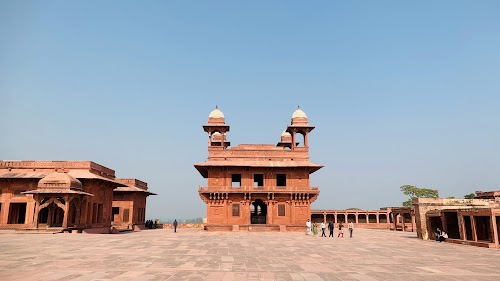
Diwan-i-Khas
Diwan-i-Khas, also known as the Hall of Private Audiences, is a remarkable structure within the Fatehpur Sikri complex. Its most striking feature is the intricately carved central pillar supporting a circular platform, believed to be where Emperor Akbar held private discussions with religious leaders and courtiers. The building's design is a unique blend of Persian and Indian architectural styles, reflecting Akbar's syncretic religious views. The single, square chamber exudes an aura of intimacy and power, offering visitors a glimpse into the Mughal emperor's personal interactions. The surrounding jali screens filter sunlight, creating a serene atmosphere. It's a must-see for anyone interested in Mughal architecture and history, offering a fascinating insight into Akbar's reign and his pursuit of religious harmony.
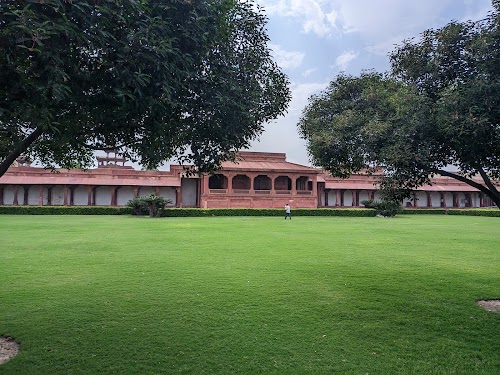
Diwan-i-Aam
Diwan-i-Aam, or the Hall of Public Audience, is a key structure within the Fatehpur Sikri complex. This grand hall served as a space where the Mughal Emperor Akbar addressed the common people, heard their grievances, and dispensed justice. Its architecture is characterized by a large rectangular courtyard, surrounded by pillared verandas. The emperor would sit on an elevated platform, allowing him to be visible to everyone present. The Diwan-i-Aam embodies the Mughal ideal of accessible governance, where the ruler was directly connected to his subjects. It's a must-see for understanding the Mughal administration and social structure.
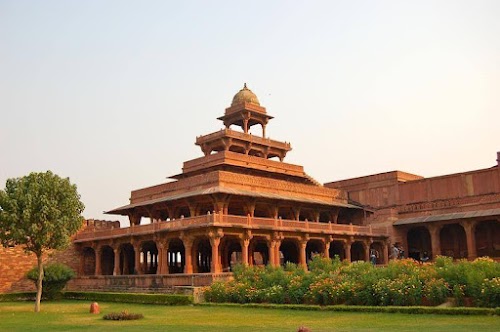
Panch Mahal
The Panch Mahal, meaning 'Five-storied Palace,' is a remarkable structure in Fatehpur Sikri. This unique building, resembling a Buddhist temple, is an open pavilion constructed on five gradually receding stories. It's believed to have been commissioned by Emperor Akbar as a pleasure pavilion for the royal ladies or as a place for relaxation and entertainment. The structure offers panoramic views of the surrounding area, including the Agra Fort on a clear day. Its design is a fascinating blend of Persian and Indian architectural styles, showcasing the Mughal era's artistic flair. The absence of any enclosure provides an airy and open atmosphere, making it a refreshing place to explore. Visitors can climb to the top for stunning vistas and appreciate the intricate carvings on the pillars.